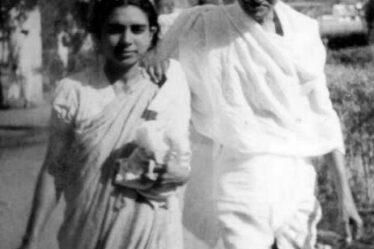Between 1966 and 1969, Indian politics was a storm in motion. Indira Gandhi—once dismissed by Ram Manohar Lohia as a “goongi gudiya” (dumb doll)—defied expectations. Not only did she win the 1967 general election, but she also consolidated power and emerged as a formidable Prime Minister. The Congress party soon split: the old guard became the Syndicate, while the breakaway faction, Indicate, rallied behind her.
Dr. Sushila Nayar had never been close to Indira Gandhi. Their rivalry dated back to the Shastri cabinet, where Indira served as Minister for Information and Broadcasting and Sushila as Union Health Minister. They rarely saw eye to eye. So, when the Congress eventually split, Nayar chose to stand with the old guard.
It was a bold political gamble. Even before the formal rupture in November 1969, the two women were not on speaking terms. Yet amid this turmoil, Sushila was determined to birth a medical college. Without the support of the Prime Minister.
In this political churn, MGIMS was quietly struggling to be born.
By 1967, Dr. Sushila Nayar was out of office, but her resolve was intact. She wanted the college to open in 1969, the Gandhi Centenary Year. The dream was alive, but the resources were not. There were no buildings, no faculty, no lecture theatres, no labs, only a makeshift hospital, and not a rupee in hand.
She turned to Gandhian stalwarts. Vinoba Bhave lived close by in Pavnar Ashram. He provided her with much needed blessings and moral support. The Gandhi Centenary Committee endorsed her vision, but couldn’t offer funding.
Blessings and support. But no money.
Her best hope was Morarji Desai—her rakhi brother—an austere Gandhian known for his frugality, unyielding discipline and unconventional health beliefs.
“Bhai,” she pleaded, “I have just a year—no staff, no infrastructure, and no money.”
It was no ordinary appeal.
Raakhi was approaching. And for Dr. Sushila Nayar, it was more than a festival—it was a bond of responsibility, of faith, of love between a sister and her brother.
Morarji Bhai Desai, the astute Baniya and the nation’s Deputy Prime Minister and Finance Minister, heard her out. His face gave nothing away. But behind those watchful eyes, a brother was already planning his gift. Not gold, not sarees, not sweet boxes.
He would give her a medical college.
On 8 August 1968, a decisive meeting was held at Parliament House. Morarji Bhai called together senior officials from the Central and State Health Ministries, the Finance Ministry, and the Kasturba Health Society at Sevagram. The discussions were long, the challenges many.
But that day, a sister’s Raakhi spoke louder than bureaucratic hesitation.
The Sevagram medical college was approved.
A brother had kept his promise. A nation would reap the reward.
But there was a caveat: MGIMS had to contribute 25% of the ₹2 crore budget. The state would match it, and the Centre would provide the remaining half. “Only when you put your own skin in the game,” Morarji said, “will the institution live by Gandhi’s values—frugality, discipline, and self-reliance.”
It was a mountain to climb—fifty lakhs in 1969. But Dr. Sushila Nayar had no choice. She accepted the challenge with quiet determination.
Every paisa counted. She began gathering whatever support she could, from wherever it came.
At a packed public meeting in Wardha, Union Minister Jagjivan Ram pledged his backing. The Zilla Parishad committed ₹2 lakhs and promised another. Land was secured. Slowly, a college began to take shape.
And destiny? It was just beginning to smile.
How? Wait for the next post.

